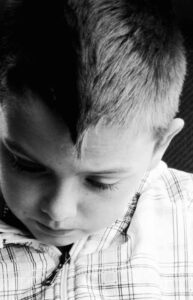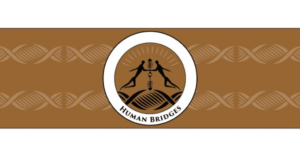Prepared Learning: What Are Humans Hard-Wired For At Birth?
No Comments yet 02-10-2024 ~ Do living beings learn and pass on to future generations some behaviors or predispositions more easily than others––and if so, how? So-called prepared learning is a question psychologists and other scientists have studied for decades, developing a series of new hypotheses about learning and experiments to test them.
02-10-2024 ~ Do living beings learn and pass on to future generations some behaviors or predispositions more easily than others––and if so, how? So-called prepared learning is a question psychologists and other scientists have studied for decades, developing a series of new hypotheses about learning and experiments to test them.
The concept of prepared learning is also known as “biological preparedness” or “associative conditioning.” The basic idea is that living beings evolved a predisposition to more easily learn the kinds of behavior that help them survive and reproduce in their environment.
Thus, humans and other animals learn responses to some environmental stimuli, such as dangers, more readily.
These survival-favorable behaviors are thought to have been passed on to future generations by natural selection. This is the evolutionary process whereby organisms that adapt to environmental changes are the ones more likely to survive and reproduce successfully.
Just as humans gradually developed bipedalism to aid their survival, they have innate responses to circumstances and tendencies that guide their behavior. Exactly how the learned behavior becomes incorporated into the genome and thus heritable is a mostly unanswered question.
Because most of the research on prepared learning concerns fear and phobias, there is also the question of how other kinds of behavior evolved that are not related to fear reactions.
From Unicellular to Multicellular Organisms
What is the mechanism of prepared learning, and can it be passed on?
Recent research has found that unicellular organisms such as amoebae can respond to associative conditioning and modify their behavior in response to specific changes in their environment. In a set of laboratory experiments reported in Frontiers in Microbiology in 2021, three species of freshwater amoeba cells were conditioned to move in a new migratory pattern in response to environmental changes.
The researchers studied the movements of more than 2,000 different cells of Amoeba proteus, Metamoeba leningradensis, and Amoeba borokensis “under three external conditions.” All three species were able to develop a new migratory pattern that lasted about 40 minutes and was remembered for long periods of their cellular cycle, although it was ultimately forgotten.
The researchers suggest that their findings could represent an evolutionary mechanism for these organisms to increase their fitness to their environment, and may “have essential implications in the origin of primitive forms of cognition and the role of convergent evolution in biological cognition.”
Similar experiments with fruit flies demonstrated that prepared learning—in this case, responses associated with where eggs were deposited and reliably hatched—could be tracked over successive generations. In a 2014 paper published in the Proceedings of the National Academy of Sciences (PNAS), researchers describe how they modeled the evolution of prepared learning in different lines of Drosophila.
Female fruit flies were exposed to the color-quinine or the odor-quinine before being given a choice between two places to lay their eggs.
The researchers found that the fruit flies “learned” over 40 generations to lay their eggs in the places that were associated with pre-exposure to the odor-quinine or the color-quinine and egg survival. The flies laid their eggs in the place that proved most reliable for success.
Reliability is the key factor in prepared learning, the researchers suggest.
Pavlov’s Influence on Preparedness Research
These unicellular amoeba behavior studies and many multicellular experiments follow the experimental conditioning concepts established by the Russian-Soviet researcher Ivan Pavlov (1849-1936).
Pavlov’s theory of learning, however, is broader than conditioned associations. He proposed that trial and error was also part of learning, and that behavior learned through this process was longer lasting. Pavlov thought that organisms follow innate instincts, such as hunger, stimulating neurons in the brain to form associations. These associations, between an action and its consequence, take shape over time to become knowledge.
Subsequent prepared learning research tried to test and quantify how this process of association works. Most experiments focused on fear and phobias, such as fear of snakes, wild animals, or heights, which are considered important in helping both animals and human beings survive in the world. They addressed two main questions: Are animals and humans prepared to learn some behaviors, particularly phobias, more readily than others, and what does this process have to do with evolution?
Phobias and Preparedness
Theoretical and experimental work on phobias blossomed after a 1971 article by psychologist Martin E.P. Seligman titled “Phobias and Preparedness,” which suggested that phobias connected to evolutionary survival, such as fear of dangerous predators, are more quickly learned in the laboratory, are very “resistant to extinction,” and are noncognitive.
The laboratory tests of Seligman’s theory over the years studied how quickly human subjects could be conditioned to fear spiders, snakes, and faces of angry men, and how these fears could be undone. For the most part, however, the results were not conclusive.
Harvard psychologist Richard J. McNally has a useful review of the prepared learning research in the decades after Seligman in a 2016 article in the journal Behavior Therapy. McNally reviews critical elaborations of prepared learning put forward by other researchers, such as selective sensitization, expectancy theory, and nonassociative theory, along with the experiments to test them.
The evolutionary aspect of how this learning might be inherited is also investigated. McNally describes the “evolved fear module” theory, which holds that early on, primates developed a neurocircuitry in the brain’s amygdala shaped by evolved fear of predators that was outside of “higher cognitive processes.” In other words, fear is an automatic response.
Experiments to test all these theories are ongoing.
Research Beyond Fears and Phobias
Providing an interesting perspective on human behavior is Stanford neurobiologist Robert Sapolsky, who is the author of the book Determined: A Science of Life Without Free Will (2023). Sapolsky writes that it is a result of “the cumulative biological and environmental luck, over which we had no control, that has brought us to any moment,” according to an article on his work in Stanford magazine.
Sapolsky says that we have no choice in how to react and respond to a situation. According to him, there is no such thing as free will, Sapolsky argues that “Put all the scientific results together from all the relevant scientific disciplines, and there’s no room for free will.”
The lack of free will, he says, means that people are not accountable for their good or bad behaviors, a perspective that has attracted some skepticism.
“If we ‘freely’ choose to do something but there was never a possibility of choosing something else, we’re not free. And if we’re not free, Sapolsky says, there is no more reason to castigate a killer than to punish a broken machine. Killers should receive medical and psychological treatment to address the larger issues that caused the problem,” Stanford magazine statesabout Sapolsky’s concept of the absence of free will in humans.
Human Responses That Challenge Prepared Learning
Does this mean that humans have no control over their emotions and how and when we express love, anger, hate, etc? A 2017 research article in PNAS suggests otherwise: “[E]motions aren’t a response to what our brain takes in from our observations, but, rather, are intrinsic to our makeup.”
Another interesting example that challenges the principles of prepared learning is of deaf children who have not learned sign language but have found a way to communicate using gestures. “The properties of language that we find in these gestures are just those properties that do not need to be handed down from generation to generation, but can be reinvented by a child de novo,” a 2010 study proposes.
What Does It All Mean?
How humans learn––and unlearn–– is an important subject today in psychology and psychiatry, and all areas of education. Panic disorder, anxiety disorder, post-traumatic stress disorder (PTSD), and other crippling emotional conditions all require an understanding of how they developed in order to treat them. Making education effective and interesting for students is important for a functioning society. How are positive associations with school best fostered?
Outside of the clinical situation, the concept of prepared learning affects people in many ways. Advertising can use aspects of preparedness and association to promote a particular product or a person; it can target information to influence specific groups of people. Cults and political groups can use this kind of learning as a way of controlling a group of individuals. Brainwashing can also use conditioning methods for unsavory purposes.
In the laboratory, after decades of research, the jury is still out on why some behaviors are more easily learned than others, whether human beings have an inherited predisposition for certain phobias, and how much of human behavior is attributable to nature and how much to nurture.
Experiments are now more sophisticated than Pavlov’s conditioning of dogs, but there is still wiggle room. We can see the experimental results, but much is still assumed and not yet proven. Human beings continue to surprise, despite prepared learning.
By Marjorie Hecht
Author Bio:
Marjorie Hecht is a longtime magazine editor and writer with a specialty in science topics. She is a freelance writer and community activist living on Cape Cod.
Source: Human Bridges
Credit Line: This article was produced by Human Bridges.
You May Also Like
Comments
Leave a Reply








